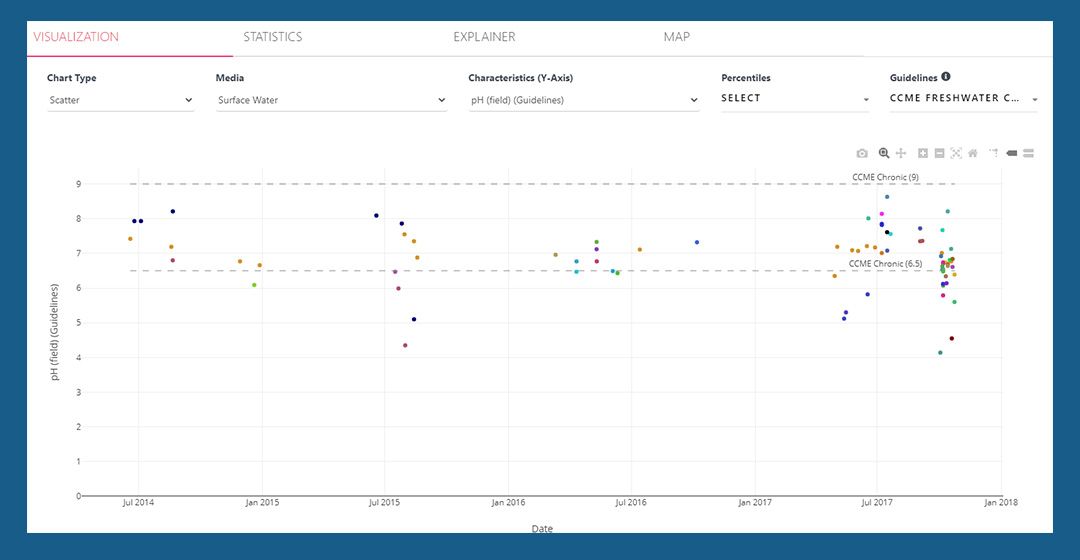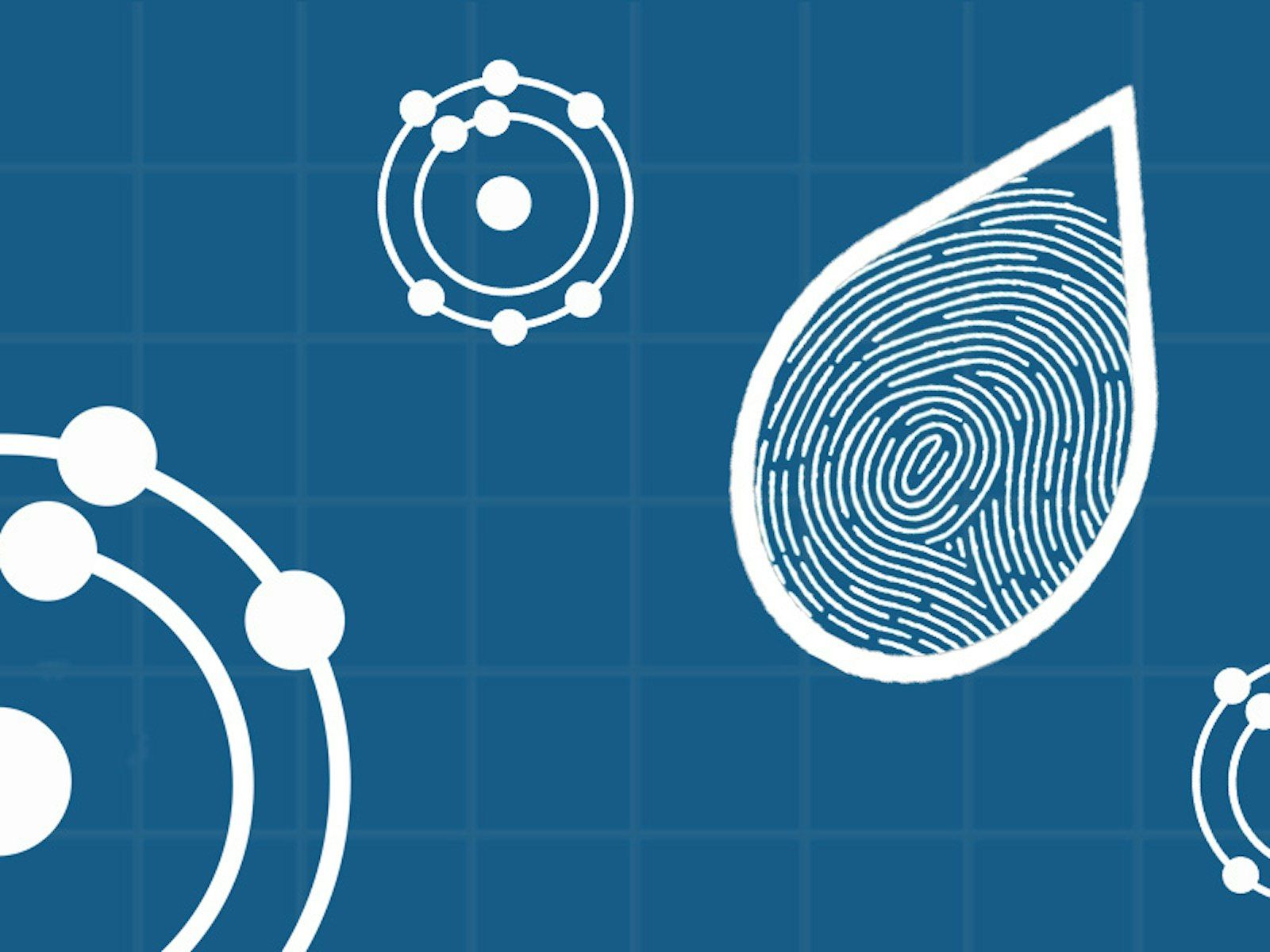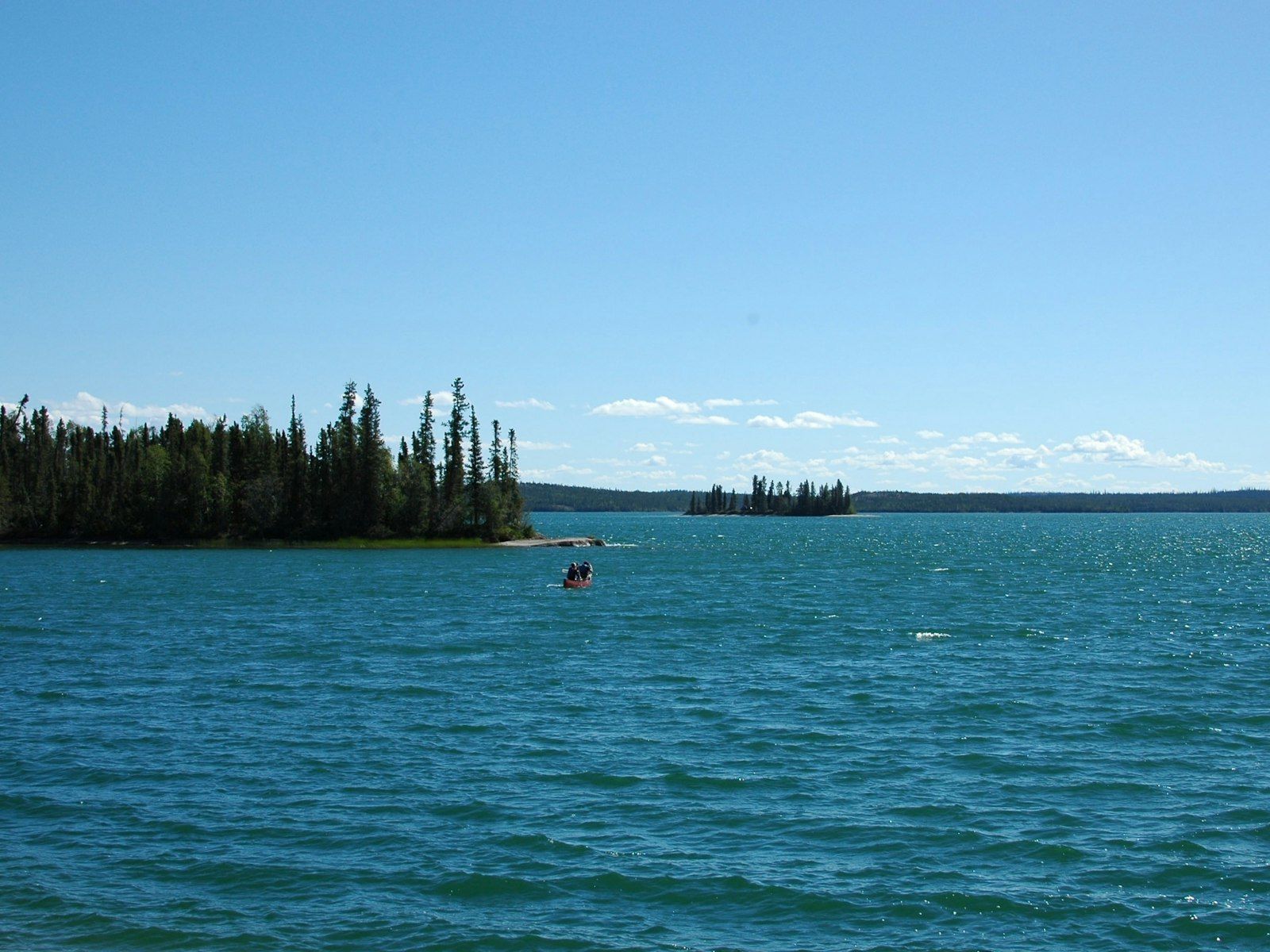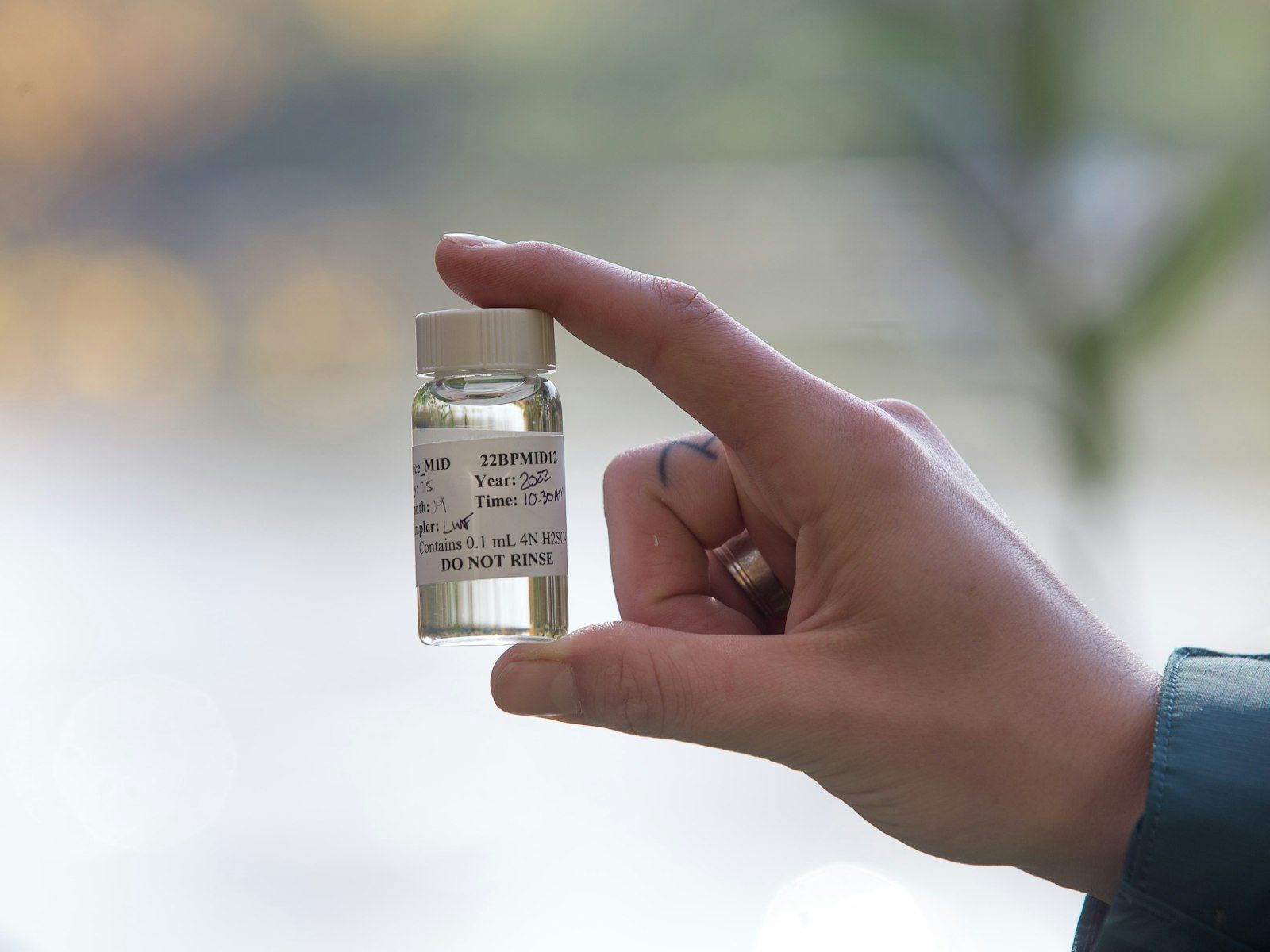Five ways open data helps protect freshwater

It’s Open Data Day, a chance to celebrate open access data from all over the world!
Open data is essential for understanding the big complex systems of Canada’s watersheds. Open data supports stronger science, fosters collaboration and enhances transparency and trust.
DataStream’s open access platform provides a place to share and access water quality data collected by diverse organizations across the country.
Here are five ways that open data on DataStream helps to protect freshwater in Canada.
1. Engaging communities
Community monitoring groups play a vital role in the stewardship of local waterways and are collecting valuable information to track watershed health. But sharing these results in meaningful ways can be a challenge.
With map-based search and user-friendly visualization tools, DataStream makes it easier to find and explore monitoring results. In addition, DataStream provides context on commonly measured parameters, covering what they are, why they matter, and how they are measured.
Learn about some more of the amazing community monitoring programs using DataStream, including the Northwest Territories-wide CBM program, the Ontario Lake Partners Program, Ottawa Riverkeeper, the Lake Winnipeg Community-Based Monitoring Network, the Nova Scotia Salmon Association (NSSA), and many more.

DataStream’s online database includes a data visualization tool that plots water quality parameters measured in a dataset. Results can be compared to national CCME guidelines for the protection of aquatic life.
2. Streamlining research
Researchers are turning to DataStream to help answer big questions about freshwater. Dr. Nandita Basu, a water researcher at the University of Waterloo, creates models to understand algal blooms, agricultural runoff, and how climate change affects water quality. Her models require water quality data, which can be tedious to track down and format.
We have heard that researchers working on watershed models can spend up to 50% of their time finding and formatting data before getting down to their real work. DataStream has hundreds of standardized datasets from across the country, saving researchers like Dr. Basu time and resources so they can focus on what’s important: research and analysis that can inform freshwater protection.
3. Advancing technology
AI and advanced modelling have opened up new ways to view and use data. However, water quality data is complex. It can include thousands of parameters in datasets that are structured and stored differently from one organization to the next. This can make it very hard and sometimes impossible to use these disparate datasets with the advanced technologies of our day. DataStream helps address this – serving up data in a standardized way that is machine-readable and can be used as raw material for advanced modelling and AI.
A great example of this is Greenland Consulting’s modelling tool called THREATS (The Healthy Rivers Ecosystem AssessmenT System) that incorporates DataStream data in a suite of modelling tools for trends in water quality, flow and climate.
THREATS is used by companies such as EPCOR utilities (Edmonton Power Corporation), allowing industry, land developers, and government agencies to include advanced predictive models in their decision-making processes.

Screenshot of THREATS (The Healthy Rivers Ecosystem AssessmenT System) Water Quality Module
4. Supporting watershed health assessments
Protecting Canada’s freshwater requires regular health assessments of our waterways, and this requires extensive data. DataStream provides access to data in one place so that data users do not have to call hundreds of organizations to find out what data they have and whether they can use it in their work.
World Wildlife Fund (WWF) Canada used DataStream while creating their latest national assessment on freshwater in Canada. Published in 2020, WWF-Canada created health scores to identify the health and threats of waterways across Canada so that water can be better managed through evidence-based decision making.
The 2020 report states that Atlantic DataStream greatly reduced the effort needed to assemble the information needed for the reports, and “allowed WWF-Canada to access 45,000 data points from eight organizations across the [Maritime Coastal] watershed” and that hubs such as DataStream “lead to more democratic and accessible water management”.
5. Informing policy and decisions
Local communities are often best-placed to observe changes in water health and are invested in stewarding their local waterways. DataStream helps to amplify the important work of community-based monitoring groups so that their data can inform policy and decisions about water management.
For example, in 2018, when construction work was proposed to a pipeline in the Mackenzie River in the Northwest Territories, there were concerns about a potential increase of turbidity due to pipeline construction. The Mackenzie River is central to the lives and culture of the Dene people.
To address these concerns, regulators needed to know the baseline turbidity range of the river, so they used data collected by community-based monitoring groups that is available on Mackenzie DataStream. If the data collected by these groups had not been available, regulators would have had to use data from the nearest government monitoring site which was at a great distance from the proposed project. The open data accessed on Mackenzie DataStream allowed regulators to benefit from community generated data in order to make informed decisions during the hearing.
DataStream is thrilled to participate in #OpenDataDay to celebrate open access data from all over the world. Though these are just five examples of how DataStream’s open access data is used to protect freshwater, the possibilities are endless!
If you use DataStream and would like to share how you use the data, we’d love to hear from you!


